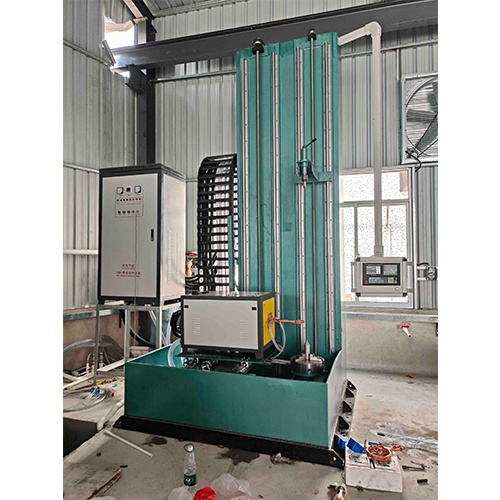Collaborative application of CNC quenching machines and induction heating furnaces
Aug. 28, 2025
The collaborative use of CNC quenching machines and induction heating furnaces achieves efficient, precise, and controllable quenching processes for metal workpieces by integrating CNC technology, induction heating principles, and automated control. This represents a core equipment combination in modern heat treatment.
I. Collaborative Advantages: Comprehensive Enhancement of Efficiency, Quality, and Controllability
1. High Efficiency and Energy Conservation
Induction heating furnaces generate heat directly within the workpiece, achieving high energy efficiency. Electricity consumption for heating a ton of forging to 1100°C is less than 360 kWh, representing energy savings of 20%-50% compared to traditional coal-fired furnaces.
The CNC system automates heating, cooling, loading, and unloading processes, minimizing manual intervention and boosting production efficiency by over 30%.
2. Precise Control
The CNC system monitors parameters such as heating temperature and cooling rate in real time, ensuring consistent quenching quality.
The adjustable frequency and power of the induction heating furnace accommodate workpieces of varying materials and sizes, including gears, bearings, and shafts.
3. Quality Optimization
Induction heating ensures uniform heating with minimal temperature difference between the core and surface, reducing the risk of workpiece deformation and cracking. For example, when paired with polymer quenching liquid, a CNC high-frequency quenching machine can limit deformation of the inner wall of a 40Cr steel cylinder to within 0.1 mm.
The multi-axis linkage capability of the CNC system enables uniform heating of complex-contour workpieces, such as localized quenching of gear tooth surfaces and roots.

II. Typical Application Scenarios
1. Gear Quenching
CNC quenching machines perform tooth surface or full-body quenching on cylindrical and bevel gears via induction heating furnaces, enhancing hardness and wear resistance with deformation under 0.05 mm to meet high-precision transmission requirements.
2. Shaft Component Treatment
Segmented quenching processes are applied to long shaft components like drive shafts and crankshafts, ensuring uniform hardness across the shaft body with surface hardness reaching HRC55-60, thereby extending service life.
3. Oversized Workpiece Processing
When paired with specialized quenching machines, this setup enables full or localized quenching of oversized workpieces such as marine gears and large oil pipelines, addressing uneven heating issues inherent in traditional methods.
4. Mold Surface Strengthening
The CNC system controls the motion path of the inductor to achieve induction quenching on mold surfaces, improving fatigue resistance and reducing finishing allowances after heat treatment.









